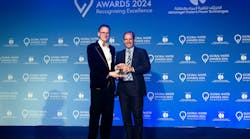NEW YORK — The 82nd Winter Meeting of the U.S. Conference of Mayors was recently held in Washington, D.C. during the week of Jan. 20. Roughly 280 of the country’s mayors attended the multi-day program including the new mayor of New York City.
The Winter Meeting included an opening press conference, notable keynote sessions, select committee breakout sessions, interesting luncheon presentations and a visit by the mayors to the White House for an afternoon collection of workshops, meetings with select members of the Cabinet and a presentation by President Obama and Vice President Biden.
The core agenda of the Winter Meeting — to encourage Congressional leaders and Administration officials to work in a bipartisan fashion in order to better spur job creation and economic growth in the cities and metropolitan areas of the United States.
During the Winter Meeting, the US Conference of Mayors released an economic report. The report noted that almost all of the nation’s 363 metropolitan areas are expected to experience a real economic growth in 2014. Specifically, almost all of the metros are expected to experience a real Gross Metropolitan Growth of one percent or higher during this calendar year. And this year, 69 U.S. metro areas are projected to experience real economic growth of three percent or higher.
According to Mayor Scott Smith of Mesa, Ariz. who is serving as president of the U.S. Conference of Mayors, “…numbers are welcome news and prove that our cities and metro areas are finally turning the corner and moving toward steady economic recovery.”
It is important to keep the nation’s cities and metro areas moving forward. After all, if cities and metro areas thrive, so does the country.
The Winter Meeting included an impressive collection of speakers such as the U.S. Secretary of Commerce, the U.S. Secretary of Energy, the U.S. Secretary of Labor, the U.S. Secretary of HUD, the U.S. Secretary of Transportation, the U.S. Secretary of Health and Human Services, the Deputy Administrator of the U.S. EPA and the Secretary of Homeland Security.
The Deputy Administrator of the U.S. EPA acknowledged the some of the most innovative ideas often arise from the cities/metropolitan governments — not the federal government. The Deputy Administrator said that he actively welcomed input from mayors when it comes to climate change and water infrastructure financing.
Additional guest speakers at the Winter Meeting included the Mexican Ambassador to the U.S., the CEO of Citibank N.A., the CEO of Philips Lighting, a senior executive of Colonial Life, the Judge Advocate General of the U.S. Army, a senior official of DuPont, a former member of the U.S. Congress/current senior official of Google, the CEO of Wal-Mart and the EVP of Starbucks Coffee Company.
A number of the committee breakout sessions addressed the infrastructure issue in general and the water/wastewater issue specifically. The topic was raised in the sessions hosted by the Council on Metro Economies, Energy Committee, Environment Committee and the Mayors Water Council.
According to Baltimore Mayor Stephanie Rawlings-Blake who serves as both the co-chair of the Mayors Water Council as well as the second vice president of the U.S. Conference of Mayors, “local government is really where things happen as far as infrastructure is concerned. We are the ones dealing with the potholes and the water main breaks. There was a time when we could get grants for these things from State and Federal governments, but those days are largely passed and we’re mostly on our own. The USCM has been an important advocate on infrastructure issues at the federal level, but it has also been a place where mayors can hear about what other cities are doing and get ideas for what might work at home.”
The Mayors Water Council was conducted over a 90 minute time period on the first day of the Winter Meeting. It included a number of presentations by various mayors on topics such as the local government affordability dialogue with the EPA, the integrated planning framework and the national water supply planning policy.
The Water Council session also included a presentation about water infrastructure investment and the role/example of public-private partnerships. The Mayor of Rialto, Calif. talked about the PPP agreement that the municipality entered into with a consortium of private sector companies. Essentially, the city of Rialto has handed its water and sewer utilities to a public private partnership that is spearheaded by Table Rock Capital. The new partnership is known as Rialto Water Services LLC. The partnership has a 30 year contract with the city. In addition to the Mayor of Rialto, the Water Council heard presentations from other members of the PPP partnership including Table Rock Capital, Veolia Water North America and Ullico.
Mayors that attended the Water Council session felt that it was very informative. It is useful to note that 35+ members are official members of the Water Council. However, the Council session at the Winter Meeting also attracted the attendance of a number of mayors that are not official members of the Water Council.
It is interesting to note that there were a number of side events/discussions at the Winter Meeting involving the water infrastructure topic. Mayors involved in the Great Lakes Compact were very much present at the Winter Meeting. And mayors involved in a relatively new initiative known as the Mississippi River Cities Initiative hosted a dinner event to discuss the efforts of cities along the Mississippi River to protect the water supply for future generations. It is anticipated that other regional mayoral initiatives may be formed to help address the protection of the local water supply of a given region.
The various sessions at the Winter Meeting of the U.S. Conference of Mayors were indeed interesting and useful according to a number of the mayoral attendees. However, it is very clear that the highlight of the Winter Meeting was the visit to the White House. According to President Obama, he wants his administration to actively work with mayors/the U.S. cities-municipalities. Addressing almost 250 mayors, the President noted that “you don’t have to wait for gridlock to clear in Congress to make things happen. I want to work with Congress whenever and wherever I can, but the one thing I’m emphasizing to all my Cabinet members is we’re not going to wait. Where Congress is debating things and hasn’t been able to pull the trigger on stuff, my administration is going to move forward and we’re going to do it in partnership with all of you.”
Notes Mayor Kevin Johnson of Sacramento, who serves as the vice president of the U.S. Conference of Mayors, “the administration is committed to working with mayors.” According to Mayor Johnson, “we’re just feeling like this partnership, the access we have to President Obama and his administration is second to none. He knows that he and his administration do not have all the answers, they want to hear from mayors…he knows we’re where the rubber hits the road.”
Moving forward, it will be interesting to observe how the dialogues between the Obama administration, the state governments and the municipal governments continue to unfold — particularly when it comes to issues like sustainable infrastructure needs of municipalities.
And it will be interesting to note whether a more proactive dialogue will evolve between the U.S. Congress and municipalities. After all, there are a number of mayors and governors that are now members of Congress (House and Senate). These individuals should all have a better understanding how to work with state and local government representatives.
Stay tuned.


